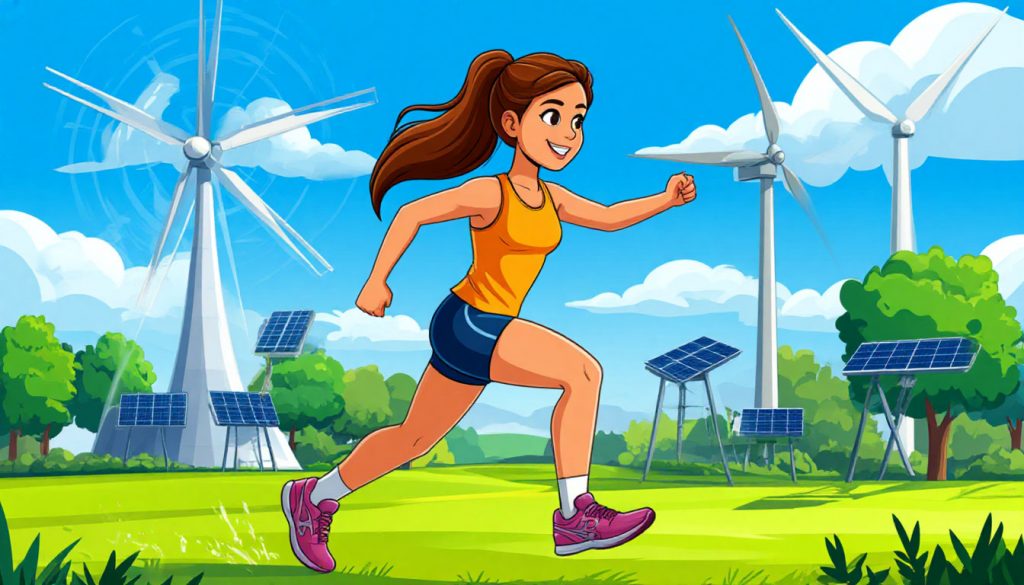Renewable energy comes from natural processes that are constantly replenished. Unlike coal, oil, or gas, renewables don’t run out — and they don’t release large amounts of greenhouse gases when used.
Key characteristics:
- Replenish naturally and rapidly
- Low environmental impact
- Reduce dependence on fossil fuels
- Play a major role in fighting climate change*
Major Types of Renewable Energy
1. Solar Energy
Captured from sunlight using photovoltaic cells (solar panels) or solar thermal systems.
- Clean and abundant
- Can power homes, cities, and satellites
- Works best in sunny regions
2. Wind Energy
Generated by wind turbines that convert moving air into electricity.
- Zero emissions
- Scalable: from small turbines to massive offshore wind farms
- Requires open spaces or coastal areas
3. Hydropower
Uses moving water — typically from rivers or dams — to spin turbines.
- Reliable and efficient
- Major source of renewable electricity worldwide
- Can impact aquatic ecosystems if not carefully managed
4. Geothermal Energy
Extracted from the Earth’s internal heat, used for electricity or direct heating.
- Steady, 24/7 energy
- Works best in geologically active regions (e.g., Iceland, California)
- Low land use and emissions
5. Biomass
Energy from organic materials like wood, crop waste, and even algae.
- Renewable if harvested sustainably
- Can replace fossil fuels in heating, cooking, and transport
- Emits CO₂, but can be carbon-neutral if balanced by regrowth
Why Renewable Energy Matters
- Fights climate change by cutting CO₂ emissions
- Improves public health by reducing air and water pollution
- Boosts energy independence and security
- Creates jobs in clean tech and engineering
- Preserves ecosystems by reducing mining and drilling
Challenges to Overcome
While renewables offer many benefits, they also present challenges:
- Intermittency: solar and wind depend on weather
- Storage: batteries or other solutions are needed to store energy
- Infrastructure: requires grid modernization and new transmission systems
- Initial cost: high up-front investment, though prices are falling rapidly
The Future of Renewable Energy
Technological innovation is making renewable energy more accessible and efficient. Key trends include:
- Smart grids to manage variable supply
- Affordable battery storage
- Hydrogen fuel from renewable electricity
- Microgrids for remote or disaster-prone areas
Global efforts like the Paris Agreement and Green New Deals are accelerating investment in clean energy.
Final Thoughts
Renewable energy is not just an alternative — it’s the cornerstone of a sustainable future. By harnessing the power of the sun, wind, water, and Earth, humanity can meet its energy needs without destroying the planet. The transition is already underway. The question is not if, but how fast we can make it happen.
Glossary
- Greenhouse gases – gases that trap heat in the atmosphere, contributing to global warming
- Photovoltaic cell – device that converts sunlight into electricity
- Geothermal – related to heat from the Earth’s interior
- Intermittency – the fluctuation of energy supply due to weather conditions
- Microgrid – a small, local energy system that can operate independently of the main grid


